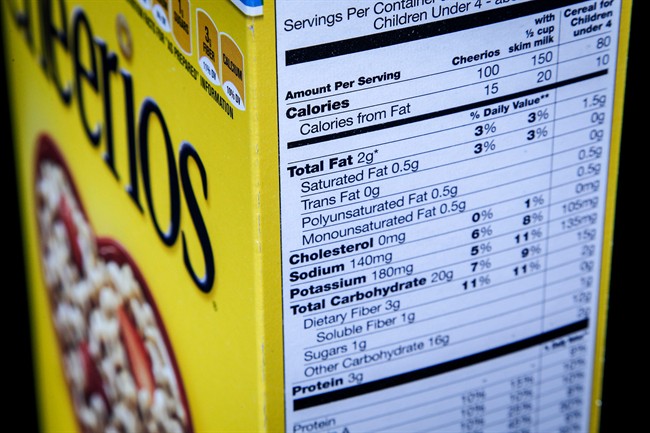What do you think when you see the words “healthy,” “low in fat” or “a good source of” on a food label? Nutritional panels can be confusing – now U.S. food officials are asking consumers to define their interpretation of certain promises made on packaging.

The goal is to streamline the criteria for these claims so food manufacturers can’t use these terms in their marketing so loosely.
“What do consumers expect of foods that carry a ‘healthy’ claim? What factors and criteria should be used for the new definition of ‘healthy’?” Dr. Douglas Balentine wrote in an FDA blog post.
“We know that many consumers use the Nutrition Facts label, especially when they are buying a food for the first time…We also know that many just don’t have the time to consider the details of nutrition information on every package they purchase,” he said.
READ MORE: Are Kind bars ‘healthy’? Here’s why the FDA is rethinking what makes a healthy snack
The FDA is appealing to consumers to share their take on what “healthy” means to them.
They’ll be holding public forums so they build these definitions based on consumer feedback, the U.S. federal agency said.
It’s the next step in the U.S.’ years-long crusade on a better nutrition label. Now serving sizes are based on the amount of food and drink people are actually going to eat in a sitting instead of what a serving size “should” be.
A serving of ice cream used to be half of a cup in 1993. Now a typical serving is about two-thirds of a cup. A single serving of soda was once eight ounces, but it’s now at 12 ounces, for example.
READ MORE: This is what new nutrition labels look like in the US
Package sizes also mislead. Before, a single bag of candy could have two or three servings. Now, a 12-ounce can of soda or a 15-ounce can of soup has to relay all of the calories and nutrients in the entire product because most people end up eating the entire item in a single sitting.
Added sugars also get their own column instead of being grouped together with sugars found naturally in food.
The FDA has already started to consult with food makers, too. It allowed Kind bars to keep “healthy” on their labels, but that was a catalyst in its decision to evaluate what makes a snack healthy.
Last year, the FDA issued a warning to Kind – the health officials didn’t like the company’s nutritional claims on the labels and packaging.
READ MORE: What Health Canada’s ‘easier to read’ nutrition labels would look like
The issue at hand is what constitutes a “healthy” snack – one stipulation, for example, is that a snack food can’t have more than three grams of total fat or one gram of saturated fat per serving.
(Keep in mind, nuts are nutritious options that happen to be high in fat.)
In an update, the FDA said it relented and is letting Kind keep “healthy” on its packaging. The term is more for decoration, though – the company had to scrap a lot of nutritional claims the FDA wasn’t happy about.


Comments